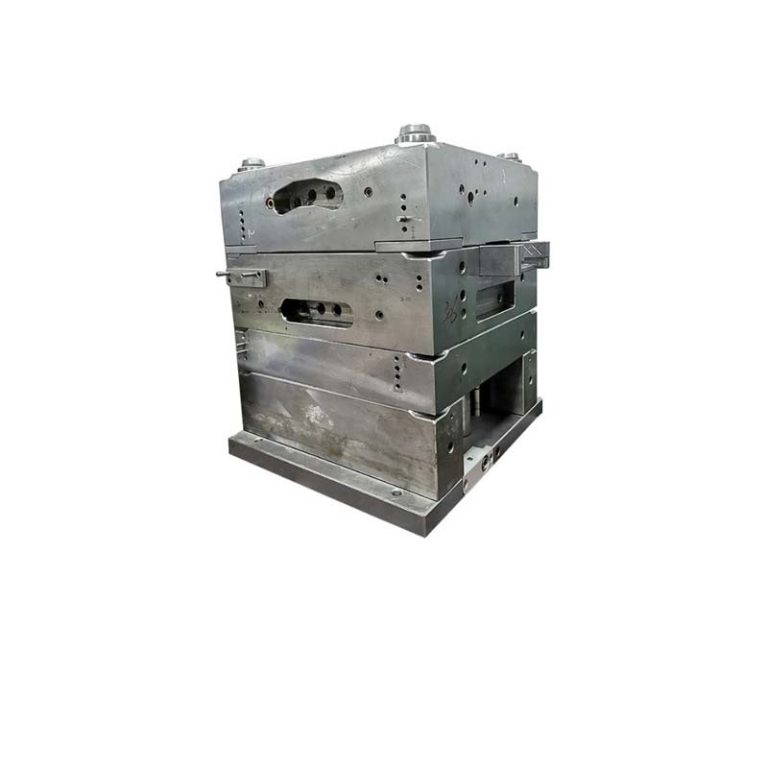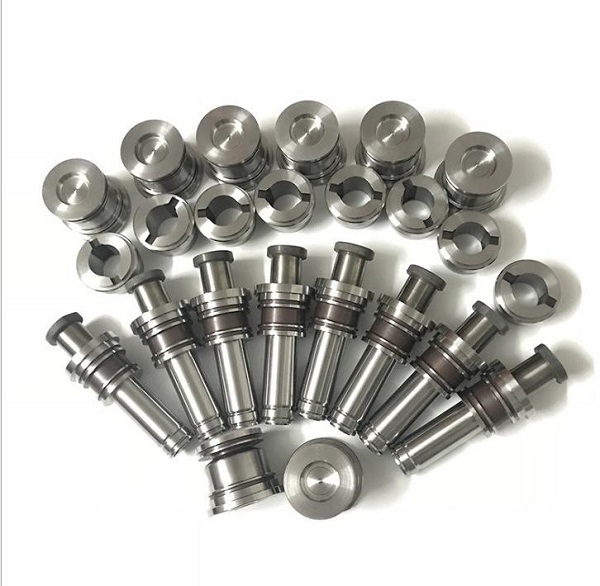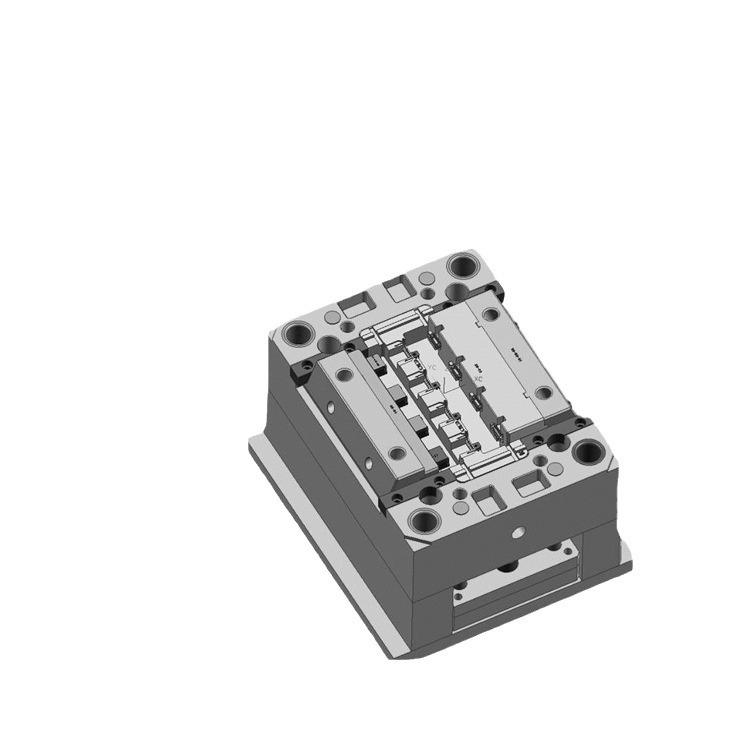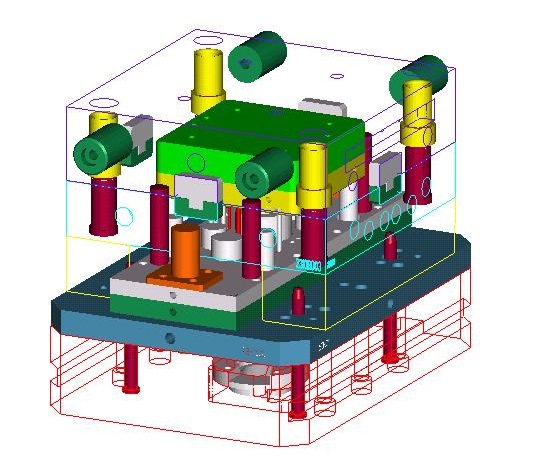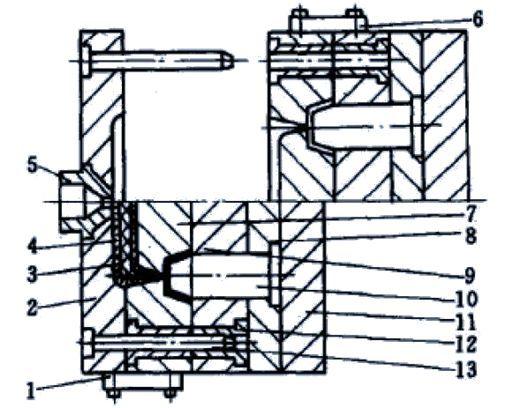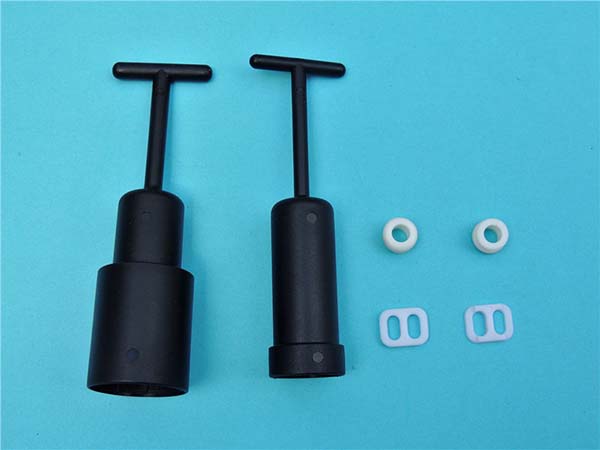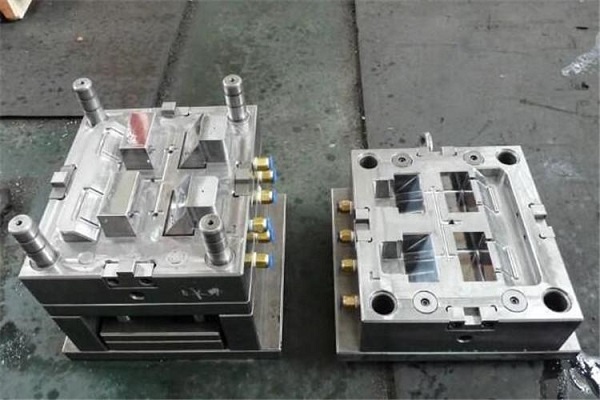1. Manufacturing Processes: A Deep Dive
1.1 Injection Molding
1.1.1 Process Explanation
Injection molding is one of the most widely used manufacturing processes in the plastic industry. The process begins with the design and fabrication of a mold. The mold is typically made of steel or aluminum and consists of two halves: the cavity and the core. The cavity is the negative shape of the desired product, while the core forms the internal features.
Once the mold is ready, the plastic material, usually in the form of pellets, is fed into the hopper of the injection molding machine. The pellets are then conveyed into the heating barrel, where they are heated to a molten state. The heating barrel contains a screw that rotates to melt the plastic and push it forward.
When the molten plastic reaches the required volume, the screw stops rotating, and the injection unit moves forward. This forces the molten plastic under high pressure into the mold cavity through a sprue, runner, and gate system. The sprue is the main channel through which the plastic enters the mold, the runner distributes the plastic to different parts of the mold, and the gate is the small opening that allows the plastic to enter the cavity.
After the cavity is filled with molten plastic, pressure is maintained to compensate for the shrinkage of the plastic as it cools. This is known as the holding or packing stage. Once the plastic has solidified enough to maintain its shape, the mold is opened, and the finished product is ejected.
1.1.2 Advantages and Disadvantages
| Advantages | Disadvantages |
| High production efficiency: Injection molding machines can produce a large number of parts in a short time, making it suitable for mass production. | High mold cost: The design and fabrication of injection molds are complex and expensive, especially for complex parts. |
| High precision: Injection molding can achieve tight tolerances, resulting in parts with high dimensional accuracy. | High initial investment: In addition to the mold cost, the purchase of an injection molding machine and related equipment requires a significant amount of capital. |
| Versatility: It can be used to produce a wide variety of plastic products, from small and intricate parts to large and complex components. | Limited to thermoplastic materials: Injection molding is mainly suitable for thermoplastic plastics, although some thermosetting plastics can also be processed with special equipment and techniques. |
| Good surface finish: The process can produce parts with a smooth and aesthetically pleasing surface finish, reducing the need for post - processing. | Waste generation: There may be some waste materials such as runners and sprues, although they can often be recycled. |
| Automated production: The process can be easily automated, reducing labor costs and improving product quality consistency. | Long lead time for mold development: Developing a new injection mold can take several weeks to months, delaying the start of production. |
1.2 Blow Molding
1.2.1 Process Explanation
Yigu Technology Blow molding is a manufacturing process used to produce hollow plastic products such as bottles, containers, and toys. The process starts with the creation of a parison, which is a tube - like piece of molten plastic. There are two main methods to produce a parison: extrusion and injection.
In extrusion blow molding, plastic pellets are melted in an extruder and then forced through a die to form a continuous tube - shaped parison. The parison is then dropped into an open blow mold. The mold closes around the parison, and compressed air is injected into the parison through a blow pin. The air pressure causes the parison to expand and conform to the shape of the mold cavity. After the plastic has cooled and solidified, the mold opens, and the finished product is removed.
In injection blow molding, a pre - form or parison is first injection - molded. This pre - form has a precise shape and thickness. The pre - form is then transferred to a blow - molding station, where it is reheated and blown into the final shape using compressed air, similar to extrusion blow molding.
1.2.2 Advantages and Disadvantages
| Advantages | Disadvantages |
| Ideal for hollow products: Blow molding is specifically designed for producing hollow objects, making it the go - to process for items like plastic bottles and containers. | Limited dimensional accuracy: The process generally has lower dimensional accuracy compared to injection molding, especially in terms of wall thickness uniformity. |
| Cost - effective for large - volume production: The equipment and mold costs can be relatively low, especially for simple designs, making it cost - effective when producing large quantities. | Complex shapes are challenging: While it can create a variety of shapes, extremely complex geometries are difficult to achieve with blow molding. |
| Good material utilization: There is less waste material compared to some other processes as the plastic is formed into the desired shape without much excess trimming. | Surface finish limitations: The surface finish may not be as smooth as that achieved by injection molding, and it can be difficult to create fine details. |
| Lightweight products: The resulting products are often lightweight, which is beneficial for applications where weight is a concern, such as in packaging. | Limited to certain plastics: Similar to injection molding, some plastics are more suitable for blow molding, and it may be difficult to process certain high - performance materials. |
1.3 Compression Molding
1.3.1 Process Explanation
Yigu Technology Compression molding is a process where a pre - measured amount of plastic material, often in the form of a pre - formed pellet, sheet, or powder, is placed into a heated mold cavity. The mold is then closed, and pressure is applied to the material. As the material is compressed between the two halves of the mold, it flows to fill the cavity and takes on the shape of the mold.
During the compression process, heat is also applied to the mold, which helps to soften and cure the plastic material. For thermosetting plastics, the heat causes a chemical reaction that cross - links the polymer chains, hardening the plastic into its final shape. For thermoplastic materials, the heat softens the plastic, allowing it to be molded, and then the mold is cooled to solidify the plastic. Once the plastic has fully cured or solidified, the mold is opened, and the finished part is removed.
1.3.2 Advantages and Disadvantages
| Advantages | Disadvantages |
| Suitable for large - scale products: Compression molding is well - suited for manufacturing large and flat plastic products, such as automotive interior panels and large industrial components. | Long production cycle: The process generally has a longer production cycle compared to injection molding, especially for thermosetting plastics that require curing time. |
| Simple mold structure: The molds used in compression molding are often less complex than injection molds, which can reduce mold manufacturing costs. | Lower production efficiency: Due to the longer cycle time and the need for manual or semi - manual loading of the material, the production rate is relatively low. |
| Can handle a variety of materials: It can process both thermoplastic and thermosetting plastics, as well as materials with fillers or reinforcements. | Limited to simple shapes: Complex geometries are difficult to achieve with compression molding, and it is mainly used for products with relatively simple shapes. |
| Low material waste: Since the material is placed directly into the mold cavity in the required amount, there is minimal waste generation. | High labor - intensity in some cases: Loading the material into the mold may require manual or semi - manual operation, increasing labor costs. |
4. Key Factors Shaping the Future
4.1 Technological Advancements
4.1.1 CAD/CAM Technology
Computer - Aided Design (CAD) and Computer - Aided Manufacturing (CAM) technologies have become indispensable in modern plastic mold manufacturing. In the design phase, CAD software allows designers to create highly detailed 3D models of plastic products and molds. For example, with software like Pro/Engineer, SolidWorks, or UG NX, engineers can quickly design complex mold structures, visualize different components, and make design modifications easily.
The use of CAD technology significantly improves design efficiency. According to a study by the Society of Plastics Engineers, on average, CAD - based design processes can reduce design time by up to 30 - 50% compared to traditional manual design methods. Designers can also use simulation tools within CAD software to analyze factors such as plastic flow, temperature distribution, and stress during the injection molding process. This helps in optimizing the mold structure, reducing the risk of design flaws like short - shots, warping, or uneven cooling, and ultimately enhancing the quality of the final product.
Once the design is complete, the CAD data can be directly transferred to CAM systems. CAM software generates tool paths for various machining operations such as milling, turning, and EDM (Electrical Discharge Machining). This seamless integration between CAD and CAM eliminates the need for manual data transfer and reduces the chances of human - error in the manufacturing process. It also enables the production of highly precise mold components, with tolerances as low as ±0.001 mm in some advanced manufacturing setups, ensuring that the molds meet the strictest quality standards.
4.1.2 3D Printing in Mold Making
Yigu Technology 3D printing, also known as additive manufacturing, is making significant inroads into the mold - making industry. Currently, 3D printing is being used for rapid prototyping of molds. For instance, a small - to - medium - sized plastic mold that would typically take weeks to manufacture using traditional methods can be printed in a matter of days or even hours with 3D printing technology. This allows manufacturers to quickly test mold designs, identify and rectify any issues, and accelerate the product development cycle.
In terms of materials, 3D printers can use a variety of plastics, metals, and composites for mold production. For plastic molds, materials like acrylonitrile butadiene styrene (ABS), polylactic acid (PLA), and high - performance polymers such as polyetheretherketone (PEEK) can be used. Metal 3D printing, on the other hand, enables the production of molds with complex internal structures, such as conformal cooling channels. These channels can improve the cooling efficiency of the mold during the injection molding process, reducing cycle times by up to 30 - 40% according to industry reports.
However, 3D printing in mold making also faces some challenges. The cost of 3D printing equipment and materials can be relatively high, especially for metal 3D printing. There are also limitations in terms of the size of the mold that can be printed in a single piece, and the surface finish of 3D - printed molds may require additional post - processing to meet the required standards. Despite these challenges, the future prospects for 3D printing in mold making are promising. As technology continues to advance, costs are expected to decrease, and the capabilities of 3D printers, such as increased build volume and improved surface finish, will expand its applications in the mold - making industry.
4.2 Material Innovations
4.2.1 New Types of Plastics
The development of new types of plastics is having a profound impact on the mold - making industry. High - performance engineering plastics, such as polycarbonate (PC), polyamide (PA, also known as nylon), and polyphenylene sulfide (PPS), offer enhanced properties compared to traditional plastics. For example, PC has excellent impact resistance, heat resistance, and optical clarity, making it ideal for applications in the automotive, electronics, and optical industries. PA is known for its high strength, abrasion resistance, and low friction coefficient, making it suitable for parts like gears, bearings, and connectors. PPS has outstanding chemical resistance, high - temperature stability, and dimensional stability, which is crucial for applications in harsh environments.
These high - performance plastics often require molds with specific characteristics. They may demand higher - temperature - resistant mold materials and more precise mold designs to accommodate their processing requirements. For instance, when molding PPS, molds need to be able to withstand temperatures of up to 300°C during the injection molding process.
Another significant development is the rise of biodegradable plastics. With growing environmental concerns, biodegradable plastics like polylactic acid (PLA), polyhydroxyalkanoates (PHA), and polybutylene succinate (PBS) are gaining popularity. PLA, which is derived from renewable resources such as corn starch or sugarcane, can be used to make a wide range of products, from disposable cutlery to packaging materials. The use of biodegradable plastics in mold - making requires adjustments in the mold - design and manufacturing processes. These plastics may have different flow characteristics and shrinkage rates compared to traditional plastics, so mold designers need to take these factors into account to ensure high - quality product production.
4.2.2 Composite Materials
Yigu Technology Composite materials are increasingly being used in plastic molds to improve their performance. A common type of composite used in molds is fiber - reinforced plastics (FRP), such as glass - fiber - reinforced plastic (GFRP) and carbon - fiber - reinforced plastic (CFRP). GFRP offers good strength - to - weight ratio, corrosion resistance, and relatively low cost. It can be used to make mold components that require moderate strength and durability, such as mold bases and some structural parts.
CFRP, on the other hand, provides even higher strength, stiffness, and fatigue resistance. It is often used in high - performance molds where weight reduction and excellent mechanical properties are crucial, such as molds for aerospace and high - end automotive applications. For example, in the aerospace industry, CFRP - made molds can help reduce the weight of the final products while maintaining high - quality manufacturing standards.
The use of composite materials in molds can also increase their service life. A study by the Composites Institute found that molds made with CFRP can have a service life that is 2 - 3 times longer than traditional steel molds in certain applications. This is due to their superior resistance to wear, corrosion, and fatigue. However, working with composite materials requires specialized knowledge and equipment. The manufacturing process of composite molds is more complex than that of traditional molds, involving processes like lay - up, curing, and post - processing.
4.3 Smart Manufacturing in Plastic Mold Industry
In the plastic mold industry, smart manufacturing is being implemented in several ways. Automated production lines are becoming more common. These lines can be programmed to perform a series of operations, from mold loading and unloading to injection molding and product removal, with minimal human intervention. For example, some advanced injection molding machines can automatically adjust the injection pressure, temperature, and cooling time based on the product being molded, ensuring high - quality production.
Intelligent monitoring systems are also being used to keep track of the mold's condition during the manufacturing process. These systems can detect signs of wear, damage, or misalignment in the mold and alert operators in real - time. Predictive maintenance, enabled by big data analytics and AI, is another important aspect of smart manufacturing in the plastic mold industry. By analyzing historical data and real - time sensor data, manufacturers can predict when a mold or equipment is likely to fail and perform maintenance proactively, reducing unplanned downtime.
The benefits of smart manufacturing in the plastic mold industry are significant. It can lead to increased production efficiency, with some manufacturers reporting a 20 - 30% increase in output. Quality control is also improved, resulting in a reduction in product defects by up to 50% in some cases. Additionally, smart manufacturing can help reduce labor costs, improve workplace safety, and enable more flexible production, allowing manufacturers to quickly respond to changes in market demand.
7. Conclusion
In Yigu Technology conclusion, plastic mold manufacturers are at a critical juncture as they navigate the future. The industry is evolving at a rapid pace, driven by technological advancements, material innovations, and the advent of Industry 4.0.
Technological progress, such as CAD/CAM technology and 3D printing, has revolutionized the design and production processes in plastic mold manufacturing. CAD/CAM enables highly efficient and precise mold design and manufacturing, significantly reducing design flaws and enhancing product quality. 3D printing, although currently facing some challenges, shows great potential in rapid prototyping and the production of molds with complex internal structures, which can potentially accelerate the product development cycle and improve production efficiency.
Material innovations, including the development of new types of plastics and composite materials, are also reshaping the industry. High - performance and biodegradable plastics are opening up new application areas while also presenting new challenges and opportunities for mold design and manufacturing. Composite materials, with their excellent mechanical properties and long service life, are being increasingly used in mold production, despite their complex manufacturing processes.
FAQs
1. What are the most promising technological advancements for plastic mold manufacturers in the near future?
CAD/CAM technology will continue to be crucial for efficient design and production. 3D printing is also expected to see more widespread use, especially as its cost - effectiveness improves and its capabilities expand. Additionally, the integration of AI in manufacturing processes for real - time optimization holds great promise.
2. How can plastic mold manufacturers deal with the high cost of new materials?
Manufacturers can collaborate with material suppliers to negotiate better prices. They can also optimize their production processes to reduce material waste. Moreover, long - term research and development efforts can be directed towards finding more cost - effective alternative materials without sacrificing quality.
3. What are the main challenges in implementing smart manufacturing in the plastic mold industry?
The main challenges include high initial investment in smart manufacturing equipment and software, the need for a skilled workforce to manage and maintain the new systems, and concerns about data security and privacy when dealing with large amounts of production data.
